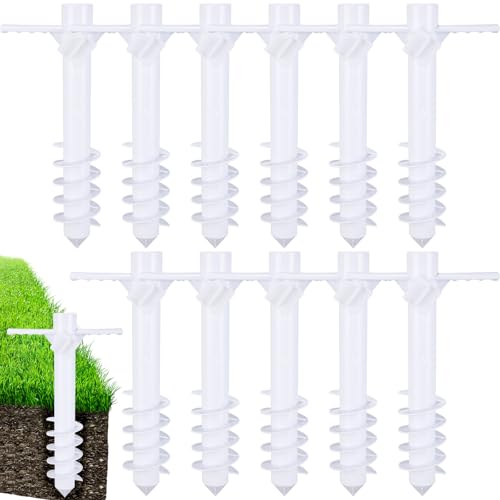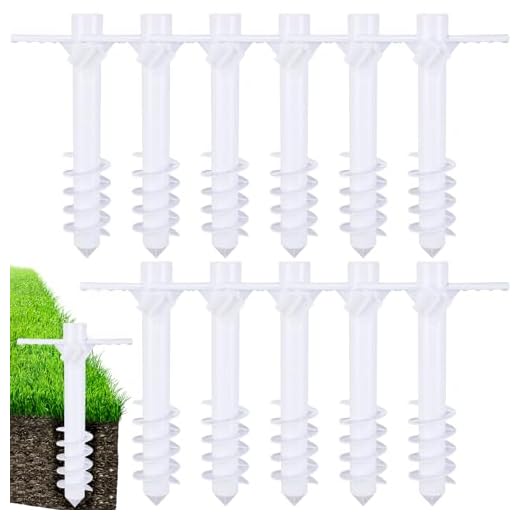
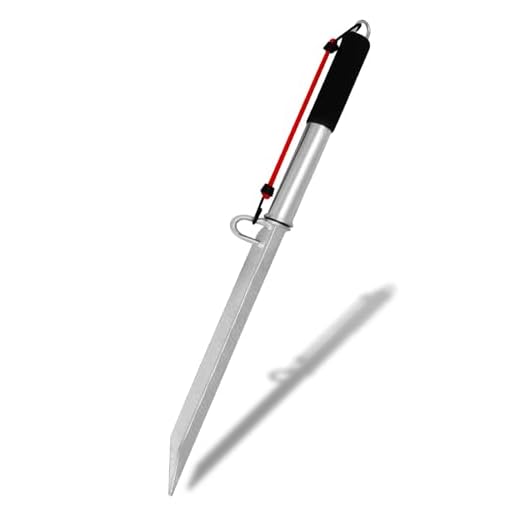
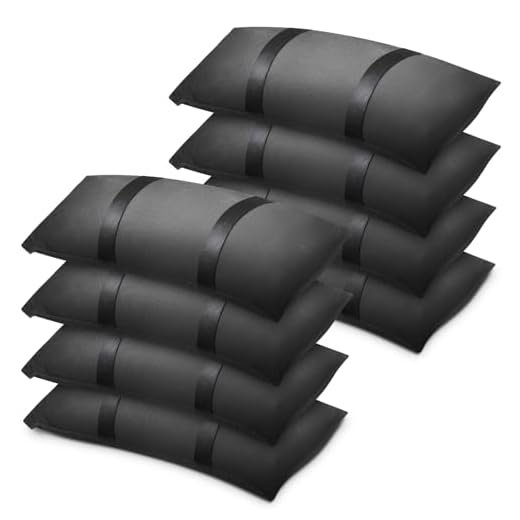

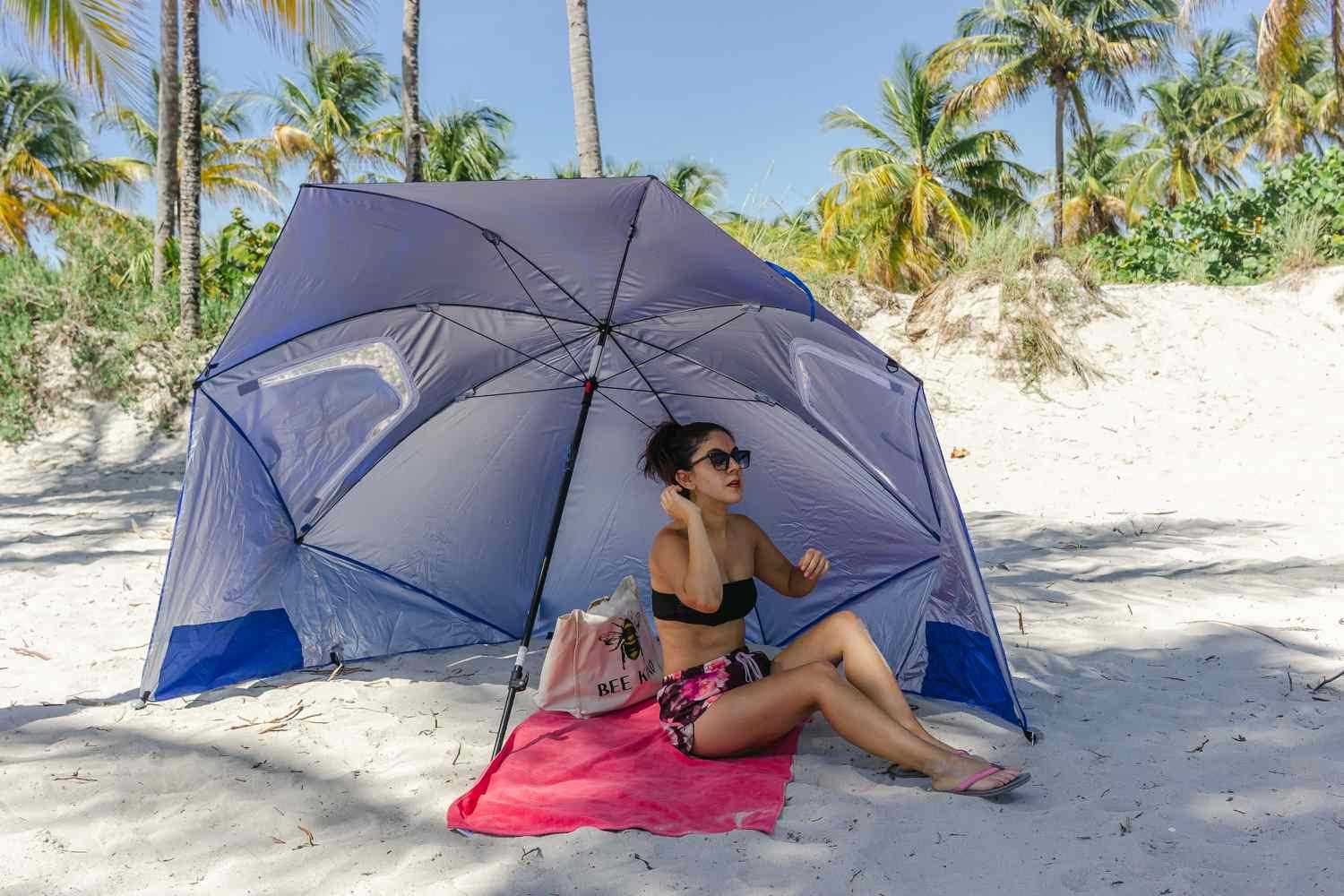
Using a sand anchor is a practical method to ensure your shelter remains in place. This device is designed to be buried in the sand, providing stability against wind gusts. Many models come with a screw-like mechanism, allowing for deeper insertion and a firmer grip.
This article outlines several strategies to maintain your shade structure firmly positioned, including the use of weighted bags, guy lines, and natural barriers. It will benefit anyone planning a day by the water, whether families, couples, or solo adventurers.
In summary, effective techniques include utilizing a combination of sand anchors, securing the canopy with weights, and considering the placement relative to wind direction. Following these tips will enhance your comfort and enjoyment while soaking up the sun.
Optimal Methods for Anchoring a Canopy by the Shore
Using a solid anchor system is fundamental. A heavy base, such as a sandbag or a weighted container, can keep the structure grounded. Ensure that the weight is evenly distributed and securely attached.
Another effective technique involves burying the pole into the sand. Dig a deep hole, insert the pole, and pack the sand tightly around it to provide stability against wind gusts. This method can significantly reduce the chances of dislodging.
Additional Strategies
Consider employing a windbreak. Setting up a towel or another object on the side opposing the wind can create a barrier, minimizing the force hitting the canopy.
- Choose the Right Location: Look for an area with less wind exposure, such as near a group of rocks or dunes.
- Utilize Guy Lines: Attach guy lines to the canopy for extra support. Secure them to stakes in the sand to create tension.
- Regular Checks: Periodically assess the setup throughout the day, adjusting as necessary to maintain stability.
These practical methods ensure a more enjoyable and worry-free experience while relaxing under a sunshade.
Choosing the Right Location for Stability
Positioning a shade structure properly can significantly enhance its resilience against wind and shifting sand. Look for areas that provide natural windbreaks, such as dunes or vegetation, as these can reduce the force of gusts and help keep your setup grounded.
Additionally, selecting a level surface is critical. Avoid placing your canopy on soft, loose sand, which can diminish its anchoring capabilities. Instead, find a firmer area where the base can remain stable throughout the day.
Factors to Consider for Optimal Placement
Evaluating the environment is vital for ensuring your shade structure remains upright and functional. Examine the following elements:
- Wind Direction: Observe prevailing winds and position towards the source to minimize exposure.
- Proximity to Water: Stay clear of wet areas that may shift with tides and create instability.
- Sun Path: Ensure the angle of the sun is considered to maximize shade throughout the day.
Incorporating these factors can lead to a more secure and enjoyable experience outdoors. Remember, a well-placed setup not only provides comfort but also enhances safety against unexpected weather changes.
Utilizing Sand Anchors for Enhanced Support
Sand anchors provide a practical solution for maintaining stability during windy conditions. These devices are designed to be buried in the sand, offering a strong foundation that prevents collapses or tipping. Proper installation of a sand anchor can significantly enhance the stability of your sunshade.
To effectively utilize sand anchors, select a location with compact sand. Begin by digging a small hole and inserting the anchor, ensuring it is buried deep enough to resist strong gusts. Attach the support mechanism of your sunshade to the anchor, allowing for adjustable tension. This setup distributes the force exerted by the wind, reducing the chance of your shelter being uprooted.
Installation Tips
- Choose the Right Anchor: Look for anchors specifically designed for sandy environments.
- Depth Matters: Bury the anchor at least a foot deep for maximum stability.
- Angle the Anchor: Position the anchor at a slight angle towards the wind for better resistance.
In addition to using sand anchors, consider securing your structure with additional weights, such as weighted bags or rocks, around the base. This extra precaution can further minimize movement and ensure a comfortable experience while enjoying sunny weather.
| Anchor Type | Pros | Cons |
|---|---|---|
| Plastic Sand Anchor | Lightweight, easy to transport | May not hold well in loose sand |
| Metal Sand Anchor | Highly durable, effective in strong winds | Heavier, less portable |
Implementing sand anchors alongside proper techniques ensures a secure setup, allowing for an enjoyable time in a sunny environment without the worry of your shade structure collapsing.
Adjusting the Angle to Minimize Wind Resistance
Positioning the canopy at a slight angle against the wind can significantly reduce resistance. A tilt of around 15 to 30 degrees is often optimal, allowing gusts to flow over rather than directly against the fabric.
To achieve this, first observe wind direction. Align the structure so that the edge facing the wind is lower than the opposite side. This setup creates a natural barrier, redirecting airflow and enhancing stability.
Practical Steps for Angle Adjustment
- Identify the prevailing wind direction.
- Adjust the height of the supporting pole if necessary, ensuring it maintains the desired tilt.
- Secure the base firmly in the sand, using sand anchors or weights.
- Check the positioning periodically, especially if wind conditions change.
Additionally, consider using a windbreak behind the setup. This can be another piece of equipment or natural elements like dunes. The combination of angle adjustment and windbreaks can enhance overall stability, reducing the chances of the structure being uprooted.
Maintaining awareness of changing weather conditions is important. Regularly assess the setup and make adjustments as needed to ensure safety and comfort.
Incorporating Weights for Added Security
Utilizing weights can significantly enhance the stability of your shade structure during windy conditions. Opt for sandbags or similar heavy objects that can be easily transported and positioned at the base of the support structure. These items provide the necessary ballast to counteract strong gusts that could otherwise displace your setup.
When considering the placement of these weights, ensure they are evenly distributed around the support pole. This balance prevents tipping and enhances overall stability. It’s advisable to check the weight recommendations provided by the manufacturer to ensure the safety and functionality of your setup.
Types of Weights
- Sandbags: Adjustable and easy to fill, these can be tailored to the specific needs of your setup, providing versatility.
- Water weights: Convenient for travel, these can be filled on-site and offer significant heft while being easy to carry.
- Stones or rocks: Readily available at many locations, these can be used to add weight without requiring extra equipment.
Incorporating these strategies will ensure your shade structure remains securely anchored, allowing you to enjoy your time outdoors without worrying about unexpected shifts in the weather. Regularly check and adjust the weights as needed, especially if conditions change throughout the day.
Using Tethers to Prevent Umbrella Displacement
Utilizing tethers is a practical approach for maintaining stability of your shade structure during windy conditions. By anchoring your setup securely, you minimize the chances of it being dislodged or toppled. Tethers can be attached to various anchor points, providing additional support against gusts of wind.
To implement this method, select durable, adjustable cords designed for outdoor use. Connect one end of each tether to the frame of your shade structure, and the other end to a stable object, such as a weighted sandbag or a fixed point in the ground. This creates a secure bond that enhances stability.
Benefits of Using Tethers
- Increased Stability: Tethers significantly reduce movement, keeping your shade in place.
- Enhanced Safety: Preventing displacement minimizes risks of injury to nearby individuals.
- Easy Setup: Attaching and detaching tethers is straightforward, allowing for quick adjustments.
Consider the following tips for optimal use:
- Ensure that the materials used for tethers are resistant to wear and tear from UV rays and saltwater.
- Regularly check the tension of the tethers, adjusting as necessary to maintain effectiveness.
- In case of extreme winds, it may be wise to lower or take down your shade structure entirely.
Implementing tethers not only enhances the longevity of your shade equipment but also provides peace of mind while enjoying your time outdoors.
Regular Maintenance Checks for Optimal Performance
Inspecting your shade structure regularly ensures longevity and reliability. Conduct checks before and after each outing to identify any wear and tear that may compromise stability.
Pay attention to the following key aspects during maintenance:
- Fabric Condition: Look for tears, fading, or signs of mildew. Clean and treat the fabric to maintain its protective qualities.
- Frame Integrity: Examine poles and joints for rust, cracks, or bending. Tighten loose screws and replace any damaged parts.
- Anchoring System: Ensure weights or stakes are functional. Replace any that are missing or ineffective.
- Storage Protocol: Store in a dry place to prevent moisture damage and avoid exposure to harsh elements when not in use.
Regular assessments can prevent unexpected failures and enhance performance. A little diligence goes a long way in extending the life of your sunshade.
Best way to secure an umbrella on the beach
Features
| Part Number | RRY-Briwooody-1585 |
| Model | RRY-Briwooody-1585 |
| Color | white |
Features
| Model | sand spike boat anchor |
| Size | 39IN sand anchor spike |
Features
| Part Number | BLUS-15 |
| Model | BLUS-15 |
| Color | Black |
| Size | 8 X 50 lbs |
Features
| Part Number | YT-00102670 |
| Model | YT-00102670G |
| Color | Black |
| Size | 41×41×3in |
Video:
FAQ:
How can I prevent my beach umbrella from blowing away?
To minimize the risk of your beach umbrella blowing away, start by choosing a sturdy umbrella designed for windy conditions. Make sure to secure it properly by burying the pole deeply in the sand or using a sand anchor. You can also weigh down the base with additional items like beach towels or bags filled with sand. If it’s particularly windy, consider using wind-resistant umbrellas that have side flaps or other features designed to withstand strong gusts. Regularly check the umbrella’s stability during your time at the beach, and be prepared to take it down if the wind picks up significantly.
Is there a specific angle to position my beach umbrella for better stability?
Yes, positioning your beach umbrella at the right angle can enhance its stability. Ideally, you should tilt the umbrella slightly into the wind, which helps reduce resistance and keeps it anchored better. This angle allows the wind to flow over the umbrella rather than directly pushing against it. Additionally, make sure the umbrella is securely anchored in the sand, and frequently check its position throughout the day, especially if the wind direction changes. If you notice any signs of instability, it’s wise to adjust the angle or take it down for safety.
What is the best method to secure an umbrella on the beach?
To effectively secure an umbrella on the beach, first, choose a sturdy and well-constructed umbrella designed for outdoor use. Look for one with a strong pole and a wide canopy. Next, find a suitable spot in the sand that is not too loose. Dig a hole about 12 inches deep to insert the umbrella pole. Place the pole in the hole and fill the surrounding area with sand, packing it down firmly to create stability. For added security, use sand anchors or weighted bags specifically designed for beach umbrellas. These can be filled with sand and attached to the base of the umbrella to prevent it from tipping over, especially on windy days. Additionally, consider angling the umbrella slightly into the wind for further stability. Regularly check the umbrella throughout the day to ensure it remains secure, especially if the wind conditions change.

